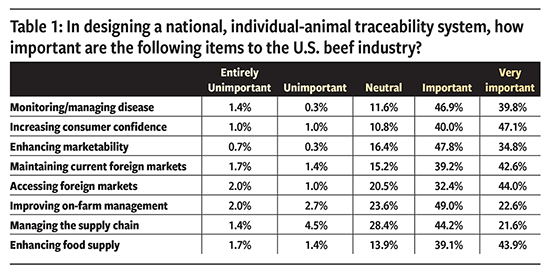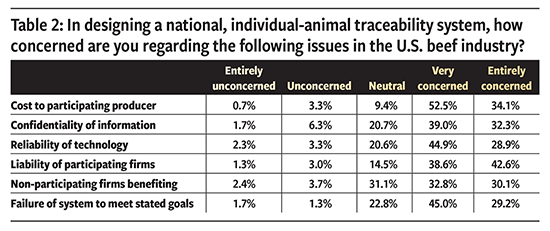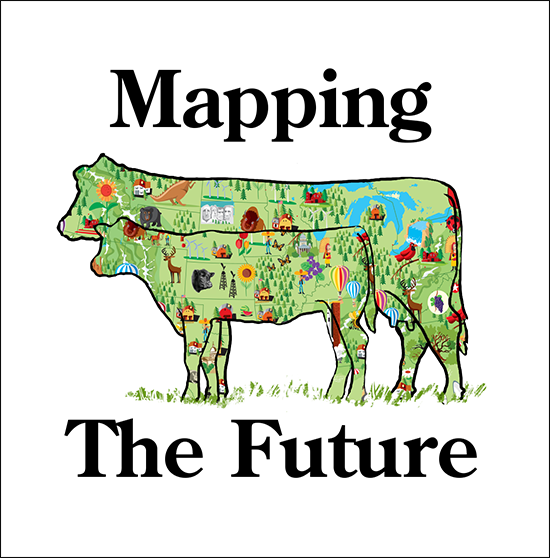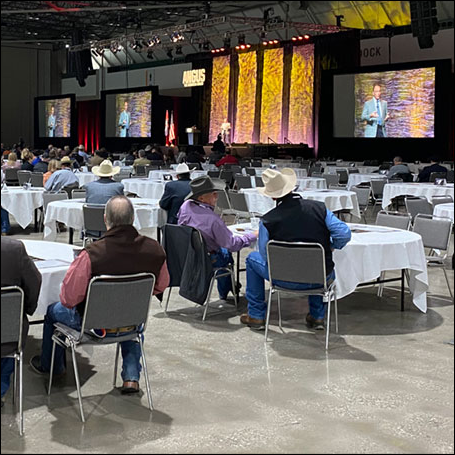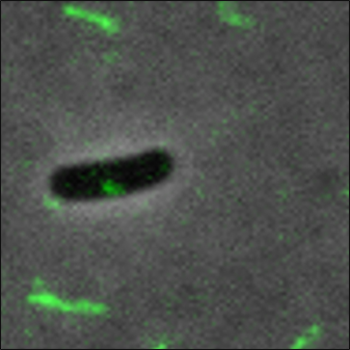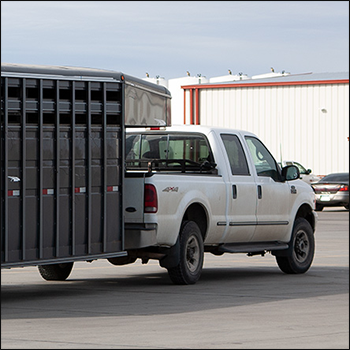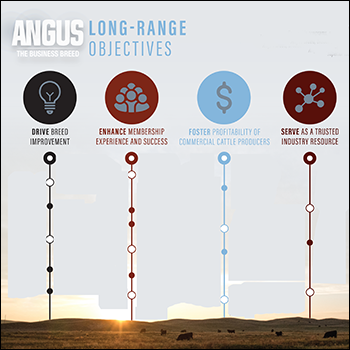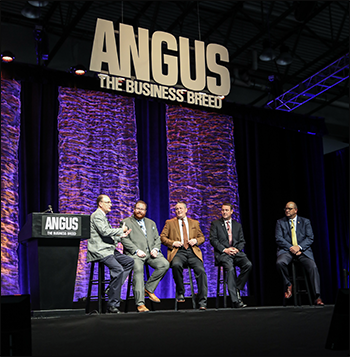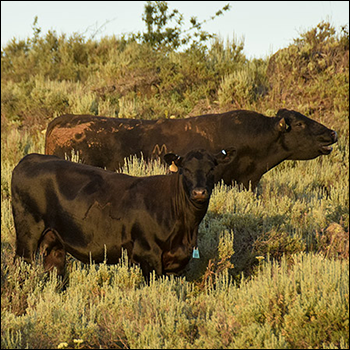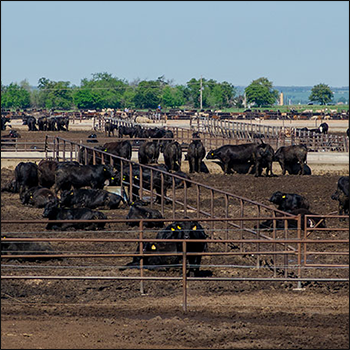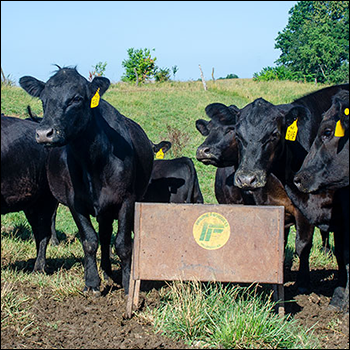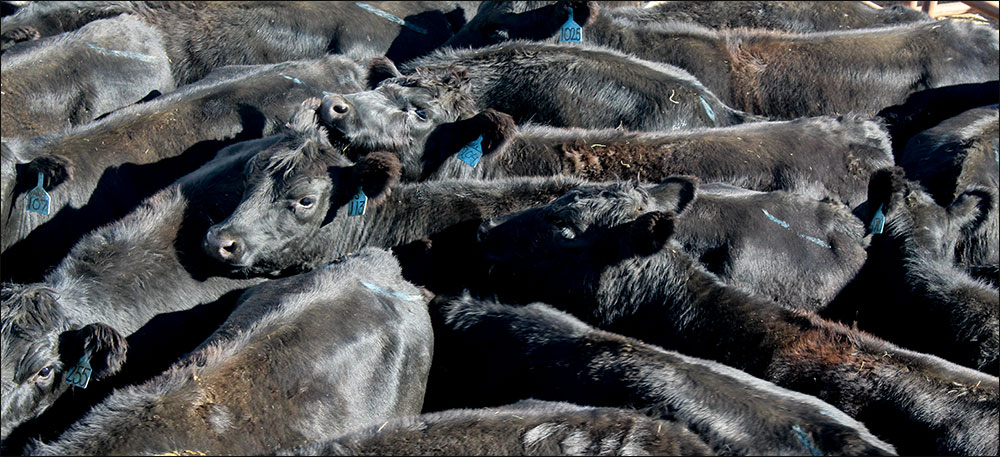
Traceability Assessment
Study assesses producer views on implementing a national individual-animal traceability system.
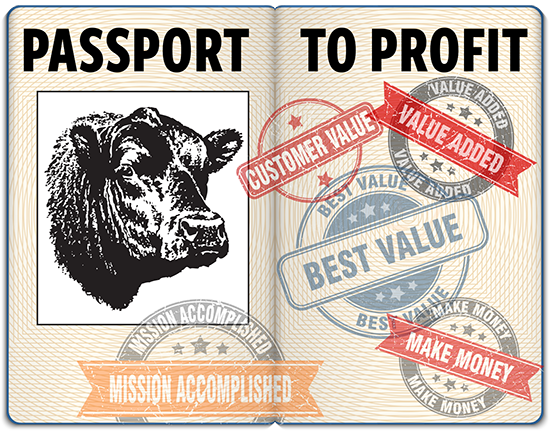
Cattlemen and women ranked consumer confidence No. 1 in importance to the beef industry in designing a national individual-animal traceability system (see Table 1). In fact, 47.1% of those surveyed recently rated increasing consumer confidence as “very important,” while 40.0% rated it “important.” The relative rankings of the other items considered are a little open to interpretation. Suffice it to say respondents considered all — monitoring/managing disease, enhancing marketability, maintaining and accessing foreign markets, improving on-farm management, managing the supply chain and enhancing food supply — important.
The study was conducted to understand beef industry characteristics, traceability adoption and perceptions, biosecurity adoption and perceptions, and the management and marketing factors that influence producer decision-making surrounding traceability and biosecurity.
The survey developed by James Mitchell, University of Arkansas; Glynn Tonsor, Kansas State University; and Lee Schulz, Iowa State University, was distributed by BEEF magazine to an eligible list of 1,500 U.S. cattle producers with operations having at least 20 beef cows. Responses indicated 33.8% of respondents had breeding herds of fewer than 100 head, 44.1% had a herd size of 100-250 head, and 22.1% had a herd of 250 head or more.
Respondents were largely commercial operations, with 77.3% indicating they were solely a commercial operation and another 14.2% indicating they had both seedstock and commercial cows. 5.4% indicated they were solely a seedstock operation.
The majority (59.8%) marketed their calves though a sale barn/auction, while 20.6% marketed their calves directly by private treaty. Another 6.6% said they sold their calves via a video or internet auction, while 3.8% sold their calves on a carcass basis. Asked if the same buyers purchase cattle from their operation each year, 56.2% said yes; 43.8% said no.
Two-thirds (67.7%) of the operations said they usually provide buyers with information about their health program, while the other one-third did not. Of those providing the information, almost half (47.8%) conveyed it verbally. Nearly as many (44.5%) provided written documentation, and 2.4% provided electronic documentation.
Among survey respondents, plastic ear tags were the most often cited identification (ID) method used, with 38.7% using this ID method. Next in line were brands (23.1%) and brucellosis tags (16.6%). Tattoos (9.0%), metal (“bright”) tags (7.2%) and electronic ear tags lagged behind in mentions.
Though there is room for interpretation, cost and participant liability would appear to create the most concern among the survey respondents for implementing a national individual-animal traceability system (see Table 2). Respondents indicated they were least concerned with maintaining confidentiality and non-participants benefiting from their efforts. Of more concern were failure of the system to meet goals and reliability of the technology.
A large majority (64.0%) said it would cost $1-$4 per head to participate in a visual traceability program that involved applying traditional ear tags that are read manually upon human inspection. 11.9% said it would cost less than $1 per head, while 24.1% indicated it would cost $5 or more per head.
Survey respondents indicated a higher cost for participating in an electronic traceability program requiring a button-like radio frequency identificattion (RFID) tag readable by an electronic reader. 26.8% estimated such a program would cost them $5-$8 per head. 20.9% estimated the cost would be lower than that, but 52.3% estimated it would cost $9 per head or more.
While only 175 of the 318 respondents answered the question, 40.6% of those who did pegged their annual cow cost in 2018 at $500-$749 per head, while 9.1% indicated their annual cow cost to be $750-$999 and 2.9% indicated an annual cow cost of $1,000 or more.
A complete summary of survey results is available at https://bit.ly/3oHNFkJ.
Editor’s note: James Mitchell is assistant professor of ag economics and agribusiness at the University of Arkansas. Glynn Tonsor is professor of ag economics at Kansas State University. Lee Schulz is associate professor and extension livestock economist at Iowa State University. Lead photo by Brett Spader.
